Engineering Quality Solutions
This detailed blog covers multiple industries and showcases use cases of AI in 2025. Learn how you can redefine your business with the latest AI modifications.

Artificial intelligence (AI) makes corporate operations more efficient and saves costs by enabling machines to perform jobs that traditionally require human intelligence. AI comes as a helping hand and helps with iterative tasks, saving human intelligence for more complex problem-solving issues. With generative AI and prompt engineering capturing the market, AI has made its presence known in various sectors, spanning from healthcare to retail or travel to manufacturing. AI is helping mitigate climate change to make this world a better place.
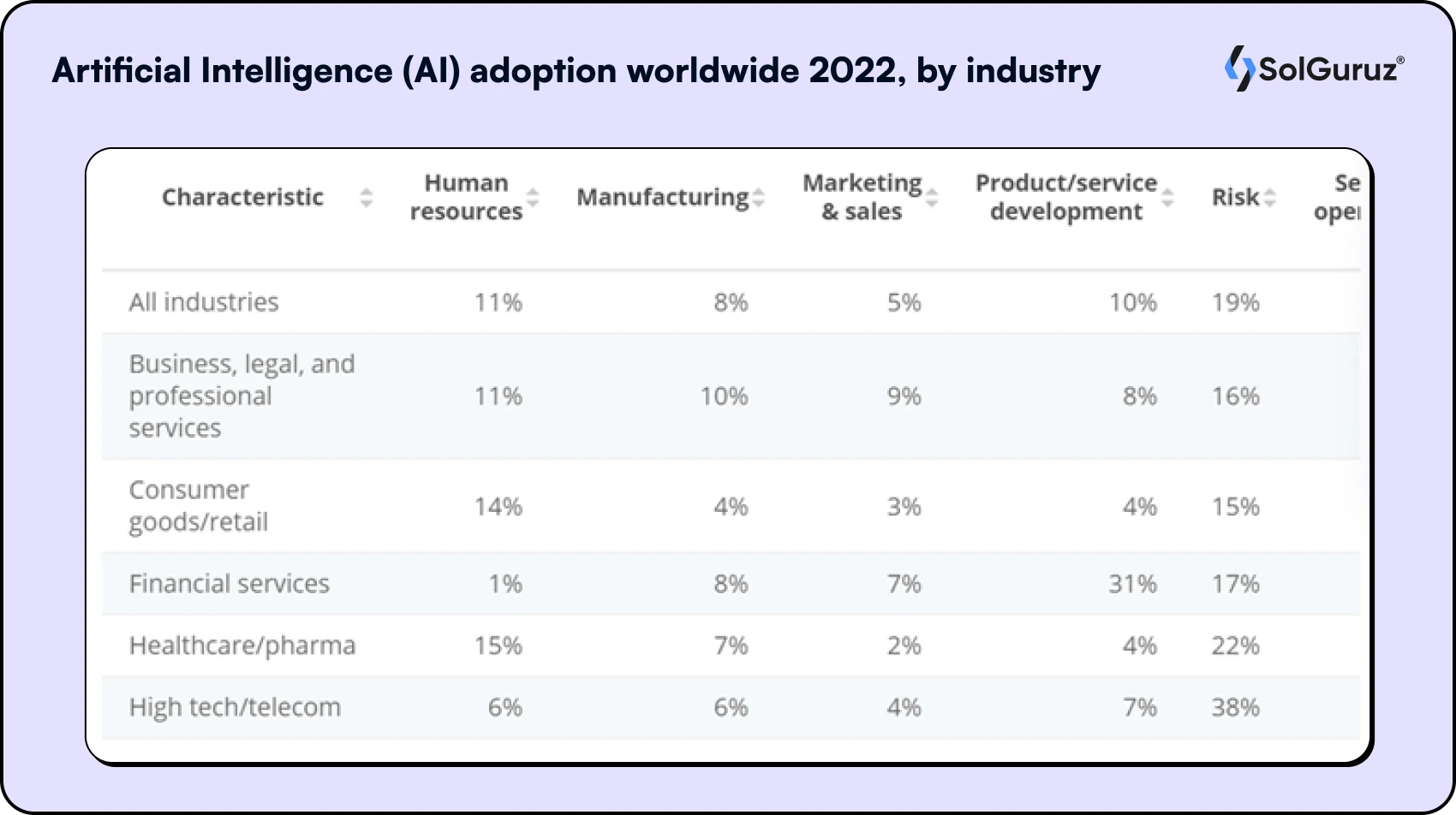
This shows how efficiently AI participates in reducing the human burden. The above numbers very aptly show AI adoption in various industries. The blog discusses the use cases of AI in different sectors.
But first, let’s brush up on some basics:
Artificial intelligence (AI) is the evolved technology used by computers and machines to simulate human intelligence for various tasks, such as problem-solving, analyzing data, learning and understanding natural languages, recognizing patterns and behavior, and other given tasks.
Generative AI is a subgroup of artificial intelligence. It is concerned with producing new content, information, or outputs that are on par with or even better than human capabilities. Generative AI models can generate original outputs based on patterns and data they have been trained on, in contrast to typical AI systems that depend on preset rules and data sets. This technology has a great deal of promise for usage in many different fields, including the creative sectors like design and art, as well as more useful applications like content creation and product design.
For businesses looking to innovate and differentiate themselves from the competition, generative AI opens up a world of possibilities by enabling the creation of lifelike images, videos, text, and even music. Businesses could automate creative tasks, reduce the time it takes to develop new products and open new doors for potential growth and innovation.
ChatGPT is one of the implementations of generative AI.
Learn more: What is Generative AI?
One key component of effectively incorporating AI technologies into software systems is prompt engineering. The inputs are called “Prompts”. It involves writing exact commands or prompts that tell AI models how to perform particular jobs or generate desired outcomes. By giving precise and targeted prompts that ensure the models align with the application’s goals and requirements, engineers may control the behavior and output of AI models.
It is especially important to engineer quickly when AI models need to communicate with humans or produce content that meets certain specifications. By fine-tuning prompts and model inputs, engineers may enhance the performance, accuracy, and usability of AI-powered systems, leading to better user experiences and outcomes.
Prompt engineering is crucial for specifying the behavior and capabilities of AI systems, regardless of whether you’re building chatbots, recommendation engines, or language-processing apps.
Learn more: What is Prompt Engineering? How do Prompts Work?
Companies of all sizes are beginning to understand how critical it is to use AI to meet their short- and long-term objectives. Artificial intelligence technologies have the ability to change a company’s infrastructure significantly.
Now that we understand the benefits of AI in business operations, let us look at the different use cases and applications of AI in different sectors.
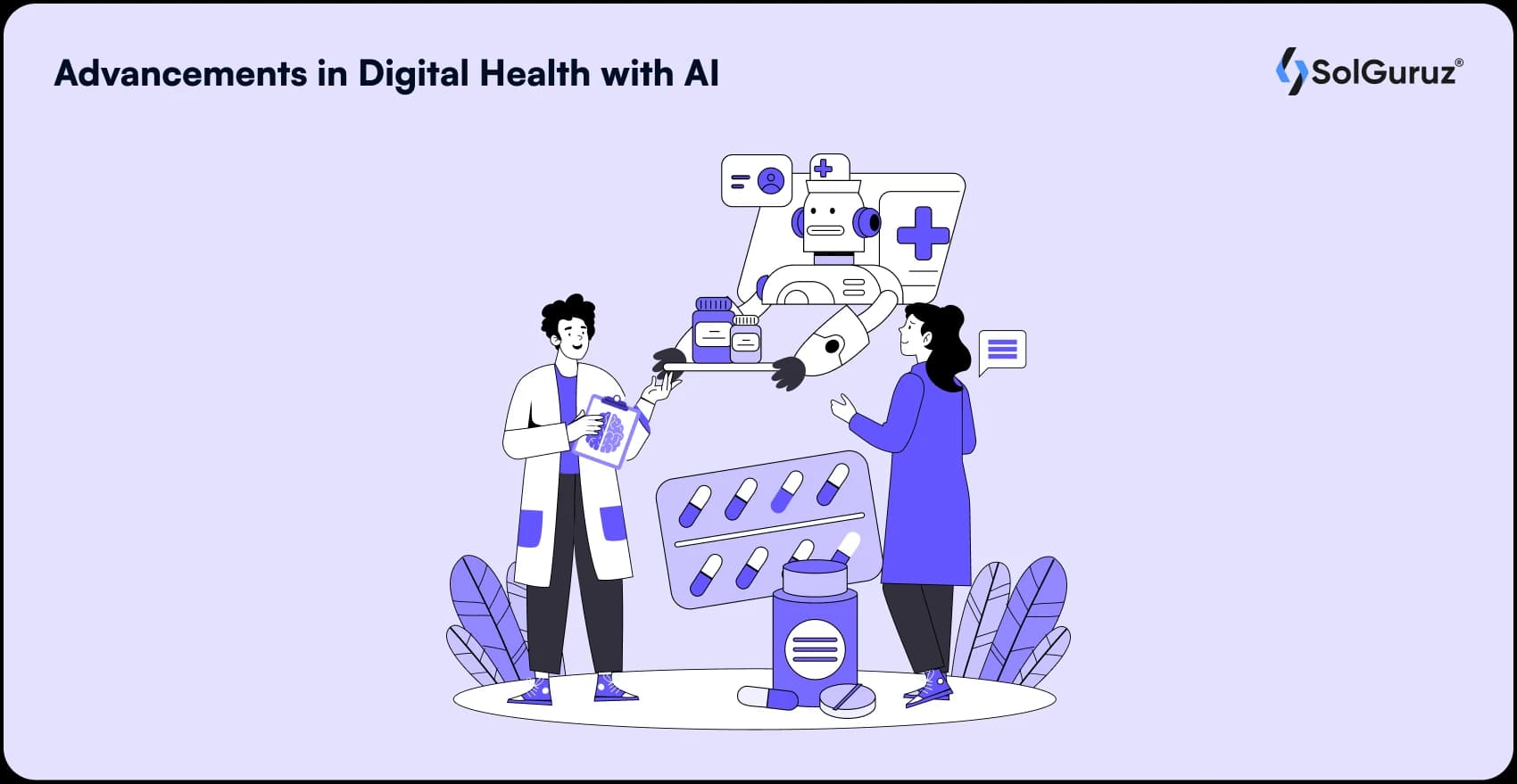
The AI healthcare market is estimated to grow to a stunning 188 billion US Dollars by 2030. The growth is tremendous in healthcare, with physicians spending 67% of their time looking into patients after AI implementation. The different applications of AI in healthcare are:
Since obtaining and analyzing information (such as medical records and other prior histories) is the first step in providing healthcare, data management is the most often used application of artificial intelligence and digital automation. Robots collect, store, reorganize, and monitor data for faster, more dependable access.
Cardiology and Radiology are two fields where there can be an overwhelming and time-consuming amount of data to analyze. With AI doing repetitive tasks like scanning and X-rays, doctors can be relieved for more critical issues. Cardiologists and radiologists can focus on more complex issues at hand.
Artificial intelligence algorithms have been developed to evaluate data, including notes and reports from a patient’s file, outside research, and clinical knowledge, to assist in choosing the best, specifically tailored course of therapy.
AI is used by apps such as Babylon in the UK to provide medical advice based on users’ medical history and shared knowledge. Users enter their symptoms via the app, and it compares them with a database of illnesses using speech recognition technology. After that, Babylon makes a suggestion based on the user’s medical background.
In between doctor appointments, Molly, a digital nurse created by startup Sense.ly, helps patients track their status and adhere to their treatment plans. With a focus on chronic conditions, the initiative supports patients using machine learning.
There are applications for online healthcare staffing like ShiftSquad, enabling quick and easy recruitment of nursing staff.
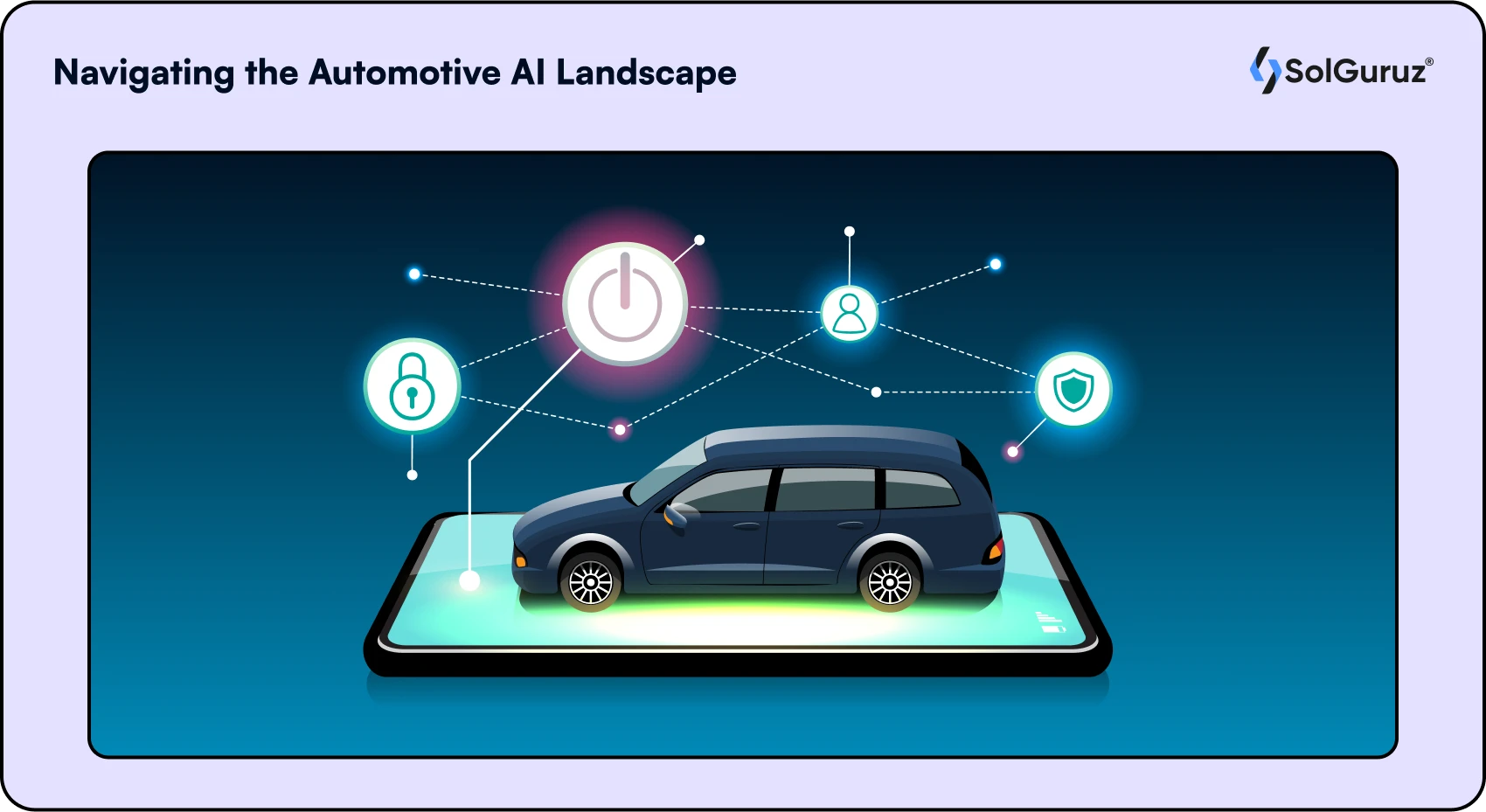
The automotive industry has always been the first to embrace the novelties of the tech world. Be it the application of radio or the implementation of smart screens in high-end cars. With Generative AI in the picture, new AI trends in autonomous vehicles have emerged, constantly taking the auto world to new heights. Let us look into some of the AI trends in the Automotive industry –
The self-driving car Tesla made much of an uproar in the market. However, the 1980s was the time when the first autonomous vehicle came into existence. Mercedes Benz was converted into an autonomous vehicle. With AI self-driving and self-learning, cars have taken a new turn with innovations: an AI-powered turn in autonomous vehicles.
Using AI tech like machine learning and deep learning, self-driving cars can autonomously drive and navigate. Although there are regulatory challenges ahead, it will be a while before we witness a fully autonomous vehicle. However, the AI trends in autonomous vehicles are sure to stay and evolve with time.
Popularly known as VPAs (Virtual Personal Assistants), VPAs in cars are a shining feature nowadays. VPAs implement AI tech like voice recognition, natural language processing, speech synthesis, and various other mechanisms to identify, understand, and learn the commands given to them. Based on learning and pattern recognition, the VPA assists you in performing your desired functions. Companies like BMW and MG have adopted AI tech and successfully launched it in their cars.
The rapid growth of IoT use cases in AI systems, which enable communication between automobiles, smartwatches, and smartphones, has made autonomous driving much safer and more pleasurable. Since the introduction of IoT to the automotive sector, cars have evolved into “smart cars,” enabling connections for smart gadgets. For instance, connected cars can communicate with one another to maintain a safe distance while driving. Connected cars also help traffic managers better control traffic flow and provide a more complete picture of the condition of the roads.
ITMS is traffic management that promotes safe transportation and mitigates collision risks – popularly known as ITMS or ATMS (Advanced Traffic Management System), it works on real-time traffic data.
This approach analyzes real-time traffic data from GPS and security cameras using artificial intelligence (AI). AI algorithms process this data to maximize traffic flow, reduce congestion, and enhance road safety. Adaptive traffic signal management systems automatically modify signal timings based on actual traffic circumstances to reduce bottlenecks.
Drivers are recommended alternate routes by dynamic route planning, which shortens travel time. Moreover, AI-powered accident detection systems locate events quickly, allowing for effective rerouting and timely reactions.
Singapore and the USA are some countries that are utilizing AI tech to control the traffic management system and safeguard the risks of accidents.
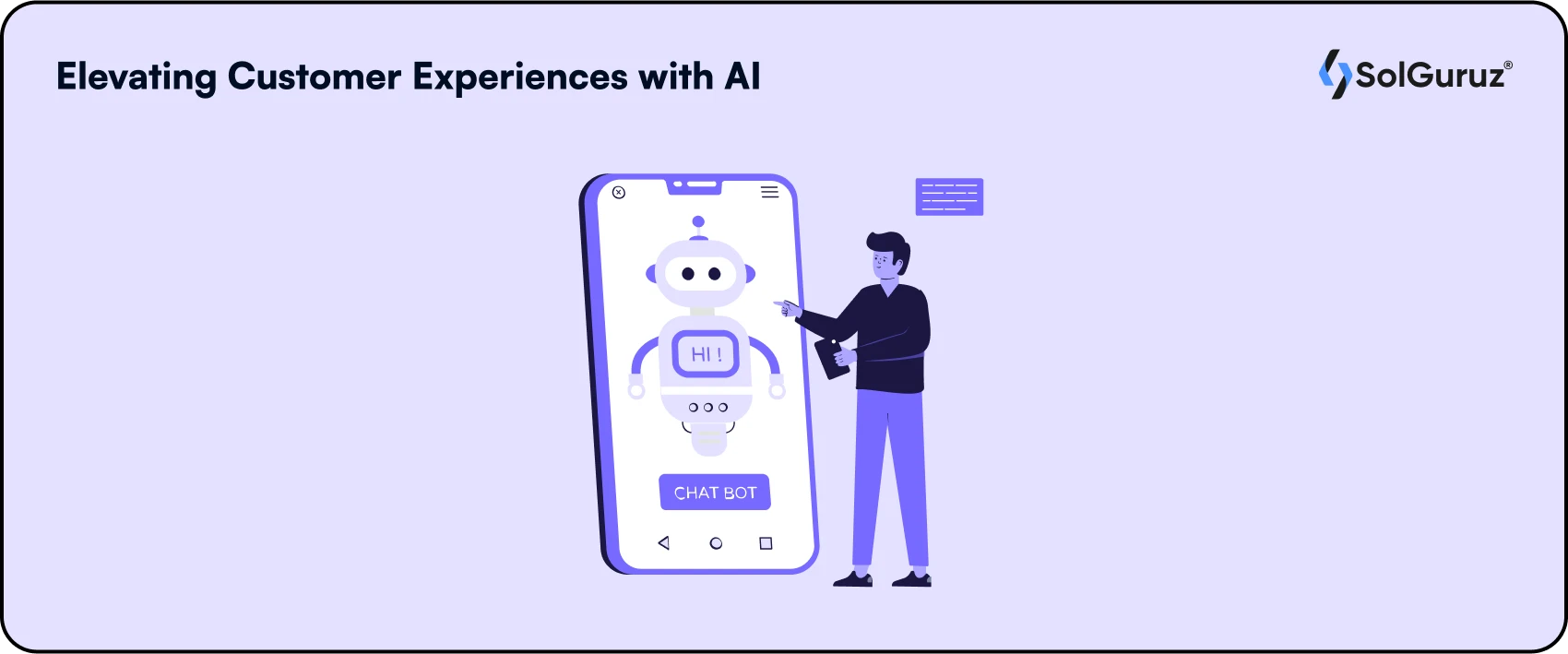
Implementing AI in customer services ensures one goal: that your best agents or human resources are available for more complex customer issues, such as account recovery, payment issues, or any such substantial issues. Artificial Intelligence (AI) relieves them of more complex tasks and boosts the company’s overall productivity. With generative AI development services, you can get custom software developed to cater to your customer service needs.
Chatbots are the best way your organization can be of service to customers with technology all around the clock. These conversational AI-powered chatbots are used to troubleshoot basic customer problems and save the customer representatives for more complex issues like a stuck customer with unresolved queries. Chatbots are available 24/7 for customers, which saves up on additional cost and time.
AI sentiment analysis tools detect customer sentiments towards the services. Sentiment analysis uses machine learning, NLP, and AI to analyze customer feelings, emotions, and underlying sentiments from reviews, texts, and feedback. Popular companies like BrandWatch, Hootsuite, MonkeyLearn, HubSpot, and many others successfully implement this technique to undermine customer sentiments.
When calling the service center for the repair services for the appliance, you are prompted by an automated voice to follow some steps, and if need be, it connects you to the customer rep. This is AI voice analysis, popularly known as IVR(Interactive Voice Response).
AI-powered FAQs or Knowledge Bases like “How-Tos” use NLP to understand the customer query and direct the reader to the desired pages. These are extensive information guides that empower customers to find the answers on their own and reduce reliance on the support team.
A tool for greater reach to customers through digital channels like live chat, email, calls, or messengers. AI-powered options make the omnipresence of any company easier. Instead of making the customer wait and annoy them, AI-powered options come to the rescue while asking the customer instead of waiting to call the company for thorough assistance. AI analyzes, based on the customer chats, what the customer is seeking help for.
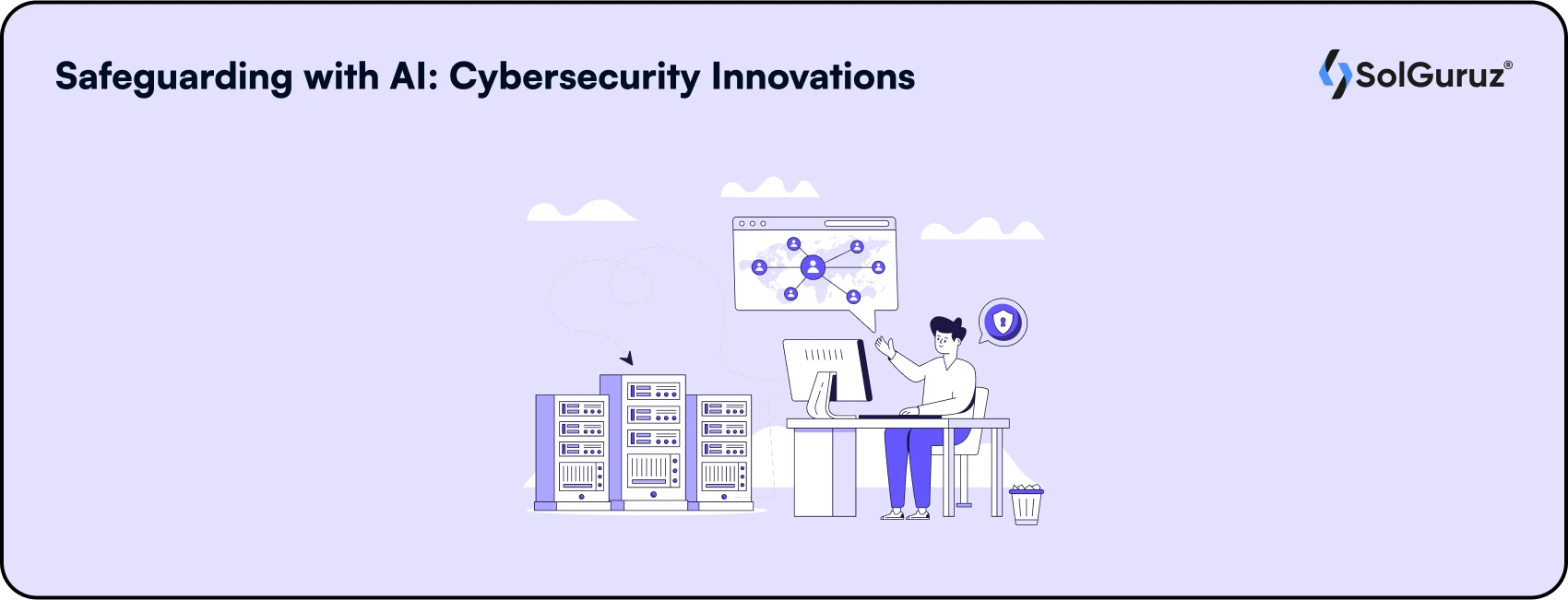
Cybersecurity is such an advanced field that it was no wonder that AI-led cybersecurity measures came into light regarding threat detection, prevention, mitigation, and other aspects.
A threat detection system is built to detect potential threats and prevent them in the future. AI and machine learning assist in speedily analyzing system logs and network traffic. AI reduces time and cost, and it detects potential threats with great accuracy. With the use of prompt engineering and generative AI models, robust cybersecurity threat detection can be done.
Companies like Honeywell and Cisco have implemented AI for threat detection and prevention. Honeywell Forge Managed security services implement automated analytics to detect the threats in security systems.
Once a threat is detected, the next obvious step is to respond to it and mitigate it. Businesses may minimize the workload for security experts and improve incident response times by implementing AI-enhanced cybersecurity solutions. Artificial intelligence (AI) automatically develops smart responses to cyber threats that correlate with global threat intelligence and network traffic patterns by correlating and mining enormous volumes of security data.
Wells Fargo’s AI technology has the ability to initiate preventative action plans automatically. For example, it can quickly isolate compromised files or block malicious traffic to stop the problem from propagating throughout the company network.
Vulnerabilities are loopholes that hackers identify in the system and violate to take advantage of the system. To find vulnerabilities and zero-day attacks, AI-driven systems, such as User and Entity Behavior Analytics (UEBA), analyze user, server, and device activity.
Utilizing machine learning techniques, the Splunk Enterprise Security platform examines enormous volumes of data from a variety of sources, such as user behavior, system events, and network logs. The platform can instantly identify trends and abnormalities that can indicate possible security vulnerabilities and malicious activity thanks to its AI-driven methodology.
An AI-powered automated threat detection system processes billions of network requests, endpoint activities, user behaviors, and data points per day. In essence, this frees up human intellect to handle tasks like creating incident responses in the wake of an attack or other cybercrime. IBM claims that AI can significantly reduce the amount of time needed to identify and address cyber threats by up to 14 weeks.
Artificial intelligence (AI) can automatically scan networks and systems for security flaws, which makes it simpler to identify potential entry points for hackers. Artificial Intelligence decreases vulnerability exposure and reduces manual work by prioritizing and recommending necessary security updates. For instance, during the first year, IBM’s managed security services team was able to automate 70% of alert closures and accelerate their threat management timeline by over 50% because of these AI capabilities.
Plaid, a well-known finance company, utilizes AI machine learning algorithms to analyze countless data points like consumer names, addresses, and other details. It reduces the manual intervention and the subsequent paperwork.
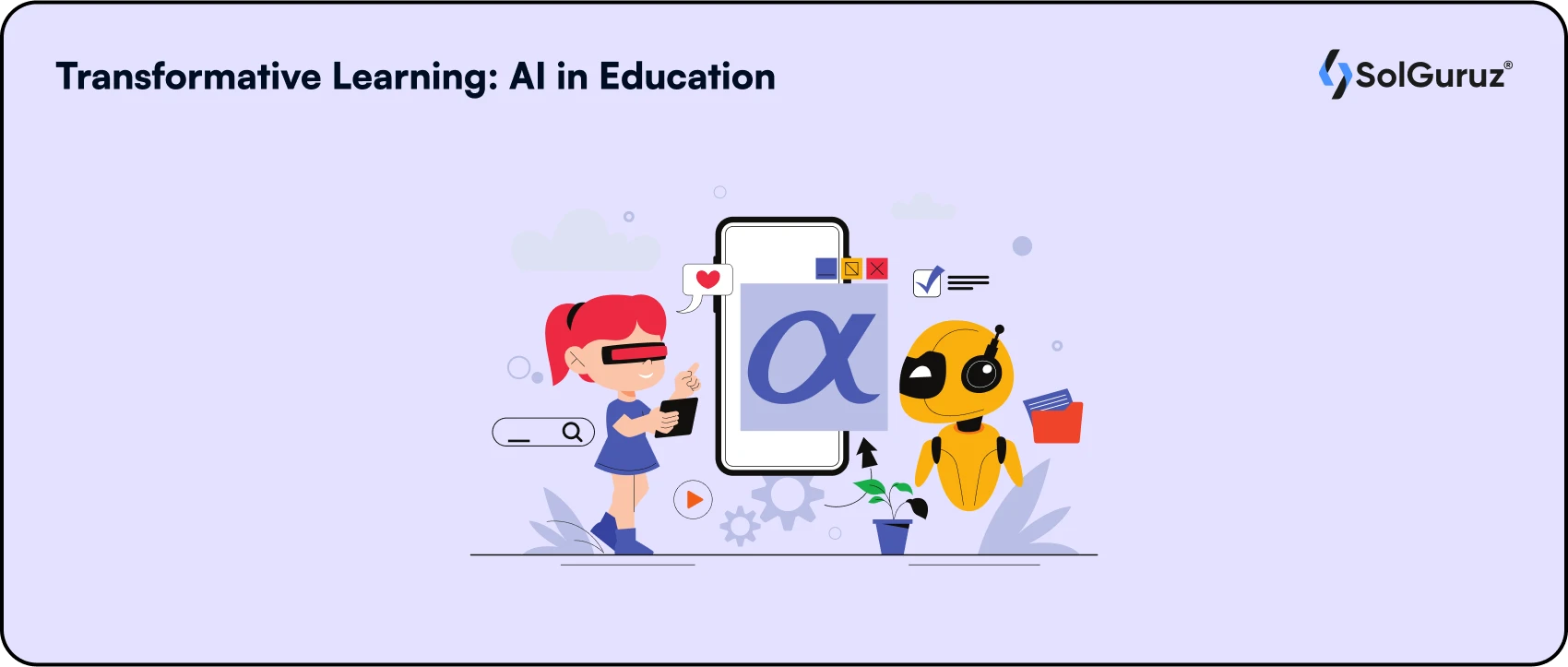
AI in the education industry has given an innovative turn to traditional methods of teaching and learning. It has increased engagement and made the learning experience novel and interesting. A few AI applications in the education industry –
It is now possible for teachers and students to stay up to date with the latest advancements in educational technology, regardless of whether they are taking part in online or collaborative learning in the classroom.
Artificial intelligence (AI) tools, such as predictive technology, can assist students with tasks, such as navigating the educational platforms their school uses, locating resources for assignments, and receiving timely responses to inquiries. Nowadays, schools are equipped with smart systems and online portals to manage the lessons and curriculum. Hiring generative AI engineers who are skilled with AI tech can design solutions like SMS bots for intelligent student-teacher assistance.
With the use of immersion technologies, students can gain practical experience in a low-risk setting by simulating real-world scenarios, including technical experiments and medical simulations.
Additionally, by attentively analyzing the planets or gazing at the different galaxies, AR and VR can assist students in bridging the gap between their physical surroundings and abstract concepts. Thanks to AR and VR, students may perceive and comprehend concepts in fresh and exciting ways. Still, they also open up new, interactive, and collaborative learning opportunities for others who might not otherwise have access to them.
Subjects like history or geography become more than just a cramming thing. With the use of AR VR, students can visualize past events in history. Geographical concepts like oceanography or the Earth’s core can be understood in detail with the help of AR VR.
Several variables can affect a student’s learning style. For example, some kids learn better with flashcards and memorization, and others learn best with more interactive and visual experiences. Teachers can get more knowledge and become better prepared to engage with different sorts of students by examining AI-collected data. Hiring prompt engineers while working with a generative AI model helps tremendously with the outcomes.
These customized learning routes may consist of components like changing the content categories, taking into account the students’ comfort levels, adjusting the learning pace, and evaluating the students’ comprehension of the learning objectives. Additionally, they may utilize AI technology to assist them in more effectively planning, scheduling, and generating suggested lesson ideas.
A great example of personalized learning is the National Project of Learning in Estonia, where focused learning is prioritized for personalized learning experiences for students.
The traditional learning approach with the traditional content is slowly getting out of the fad. With AI in the picture, intelligent content can help students not only learn efficiently but also understand concepts very quickly and effectively. The new developments in the education industry can reveal innovations in the industry with AI intelligent lessons. Smart classrooms are another famous example of AI in education.
Learning a language has become easier with technology. Duolingo is a global language learning platform that uses AI to make it easier for students to learn new languages. The interactive and intuitive sessions focus on making learning an enjoyable experience.
Exploring the world with AI-powered language translator apps is more than just a dream. Anyone can go to any country without thinking about the language barrier. AI-powered translator apps make it convenient for anyone to converse in any language.
Climate change is one of the biggest threats to humans, and measures taken to mitigate climate change are getting smarter every day with the use of AI. AI is advancing climate change mitigation measures worldwide on different scales. A few measures are –
Artificial intelligence (AI) algorithms maximize how renewable energy sources, like solar power or wind power, are integrated and managed into the electrical grid.
Smart grid technologies leverage AI to forecast renewable energy generation, balance supply and demand, and optimize energy distribution to maximize efficiency and reliability.
Natural disasters bring with them a lot of destruction. AI tech is used to predict disasters in advance to save not only human lives but also to prepare governments and communities better.
Sipremo, a Brazil-based company, uses AI to predict climate disasters – when and where the disaster will hit and how badly it can impact human lives.
Google Deep Mind’s Graphcast AI model predicts and gives weather forecasting for the following ten days with any possibility of cyclones or potential cyclone paths.
AI-driven energy management systems analyze building data, occupancy patterns, and environmental conditions to optimize energy usage and reduce carbon emissions.
Smart thermostats, developed by companies like Nest and Google, use AI algorithms to learn user preferences, adjust temperature settings, and optimize heating and cooling schedules for maximum energy savings.
AI technologies, such as satellite imagery analysis and machine learning algorithms, enable more accurate monitoring and management of natural resources, including forests, water bodies, and agricultural land.
Space Intelligence has mapped more than 1 million hectares of land. The company has metrics to calculate the deforestation rates and deforestation impact on climate change.
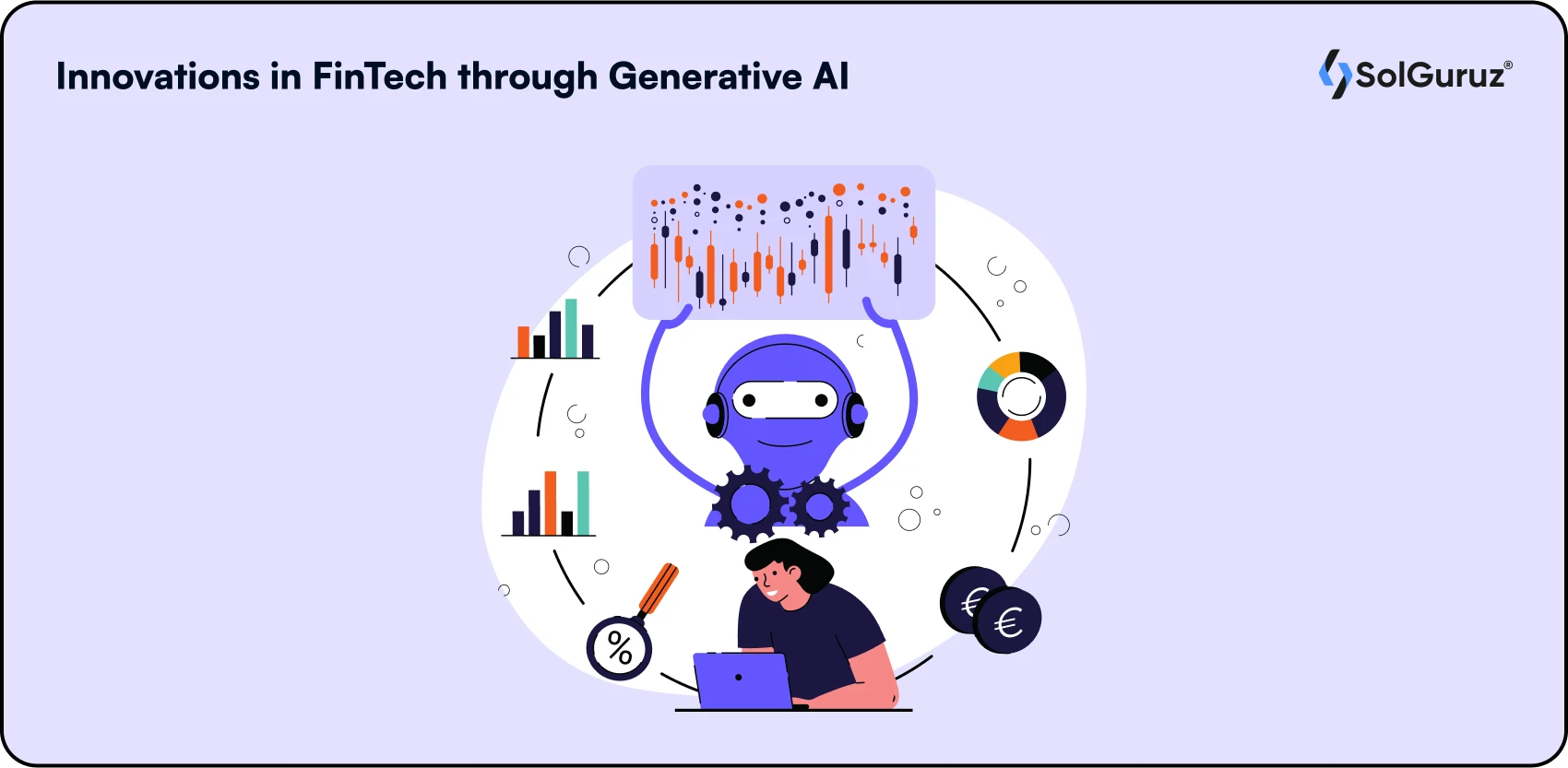
The Fintech industry was already adopting blockchain and cryptocurrency. The advent of AI turned the tables for fintech and gave fraud detection and security a new meaning. A few use cases of AI in fintech –
Artificial intelligence (AI) is used in banking and finance to detect fraud in real-time by examining transaction patterns, spotting irregularities, and raising red flags for possible fraudulent activity. The security of financial transactions is improved by machine learning algorithms that adjust to changing fraud tendencies.
AI-driven credit scoring models leverage machine learning techniques to assess borrowers’ creditworthiness based on various factors, such as credit history, income, and spending behavior.
Fintech companies like LendingClub employ AI algorithms to assess loan applications, identify risk profiles, and present borrowers with customized loan conditions.
AI algorithms analyze market trends, news, and historical trading data to identify new opportunities. They predict and recommend market moves depending on your history.
Fintech platforms like Robinhood and Wealthfront use AI-powered robo-advisors to offer automated investment management services, creating diversified portfolios and rebalancing assets based on investors’ goals and risk tolerance.
The retail markets are concerned with customer dealings. AI enhances the customer retail experience with better image recognition techniques and personal recommendations. Use case of AI in retail like –
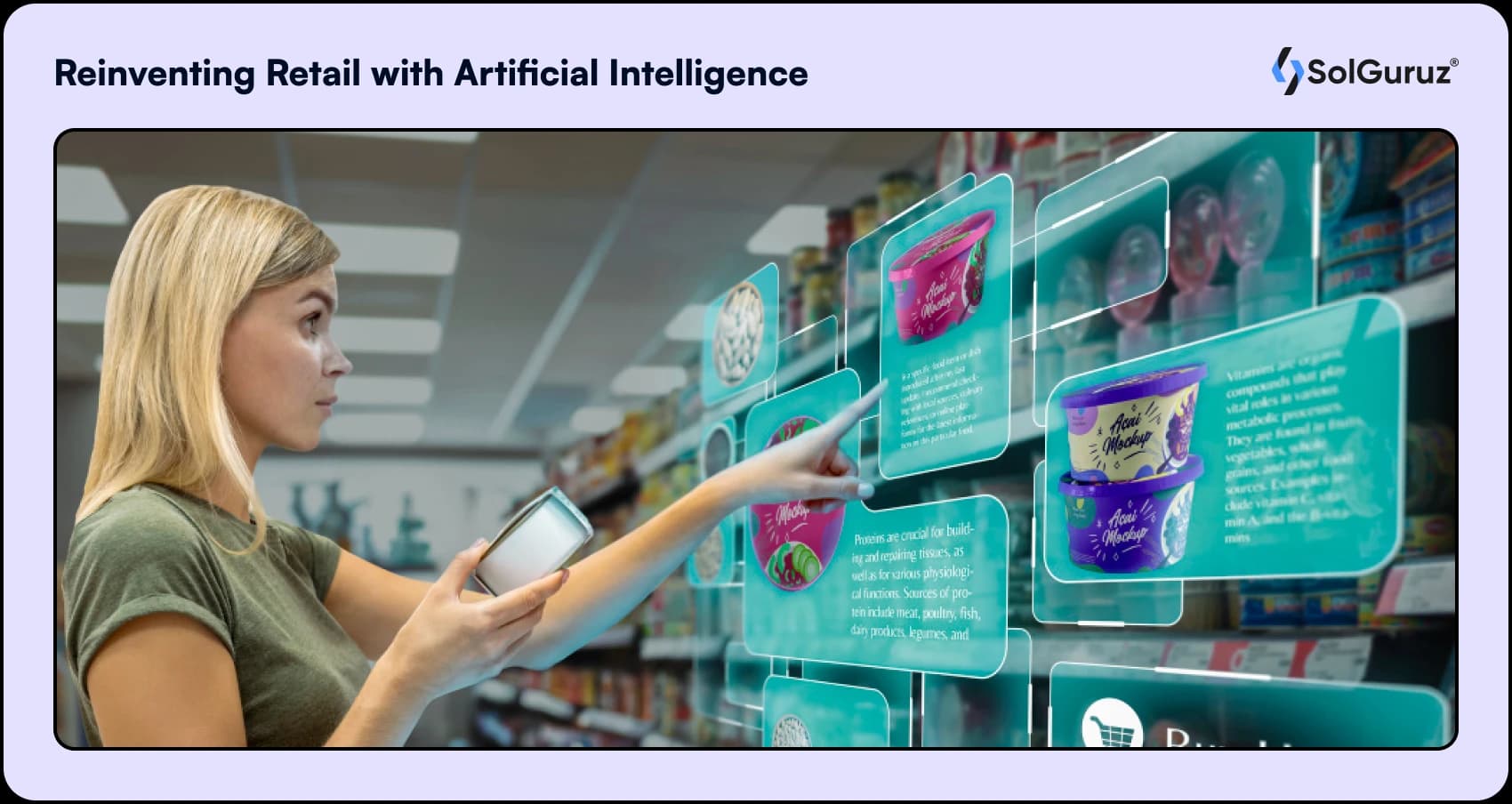
AI-powered recommendation engines analyze customer choices, browsing patterns, and purchase behavior to deliver personalized product recommendations and suggestions.
Platforms like Amazon and Netflix use AI algorithms to recommend products, movies, and TV shows based on individual user interests and preferences.
To project future demand and optimize inventory levels, artificial intelligence (AI) systems use past sales data as well as external factors.
AI-driven inventory management solutions are used by retailers to cut down on surplus inventory, minimize stockouts, and enhance supply chain effectiveness.
Customers can now use images or photos instead of text-based searches when searching for products as a result of AI-powered visual search technology.
AI-driven visual search engines are used by retailers such as ASOS and Pinterest to help users easily locate new products, explore style inspiration, and find visually comparable products.
Companies like Warby Parker and IKEA leverage AI-powered AR tools to offer virtual try-on experiences, allowing customers to see how products look and fit into their homes.
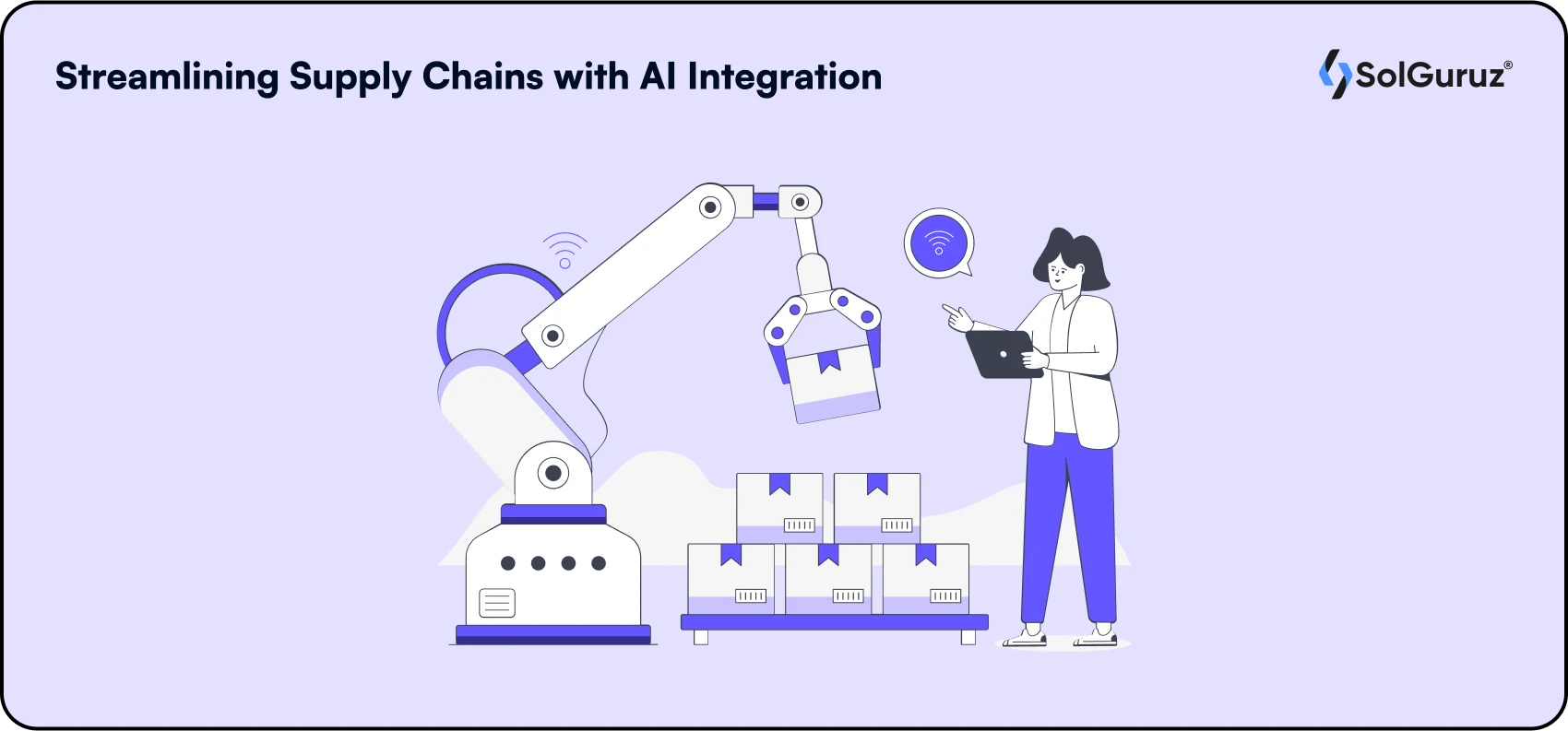
A supply chain is the backbone of distribution and can make or break any business. Companies with a sound supply chain grow swiftly. AI is streamlining the:
AI algorithms analyze historical data to forecast the demands. It takes into account the stock limits and demands.
For instance, Walmart uses AI-powered demand forecasting models to anticipate customer demand, minimize stockouts, and optimize inventory replenishment across its stores.
Artificial intelligence (AI)-driven route optimization algorithms take into account variables including traffic patterns, weather predictions, and vehicle capacities to optimize delivery routes, save transportation costs, and improve delivery times.
AI-powered routing software is used by logistics corporations like UPS and FedEx to plan effective delivery routes, distribute resources, and enhance fleet management.
AI-powered robots and automation systems are used to enhance operations. AI automates repetitive tasks, such as packing and sorting, and increases operational efficiency.
Amazon’s fulfillment centers employ AI-driven robots to transport goods, navigate warehouse environments, and assist human workers in fulfilling customer orders with speed and accuracy.
AI enables effective real-time tracking and monitoring of shipments, providing prompt notifications for any delays or problems. Cutting-edge algorithms examine shipping data to anticipate possible issues and facilitate preventative action. Artificial Intelligence (AI) lowers delivery times, increases overall efficiency, and guarantees dependable and pleasant deliveries for higher customer satisfaction by optimizing delivery routes based on geography and traffic patterns.
The media and entertainment sector is keeping up with the advancements in artificial intelligence. Whether it is movie recommendations, music recommendations, game designs, or UX UI design, AI has its presence in the creative field as well.
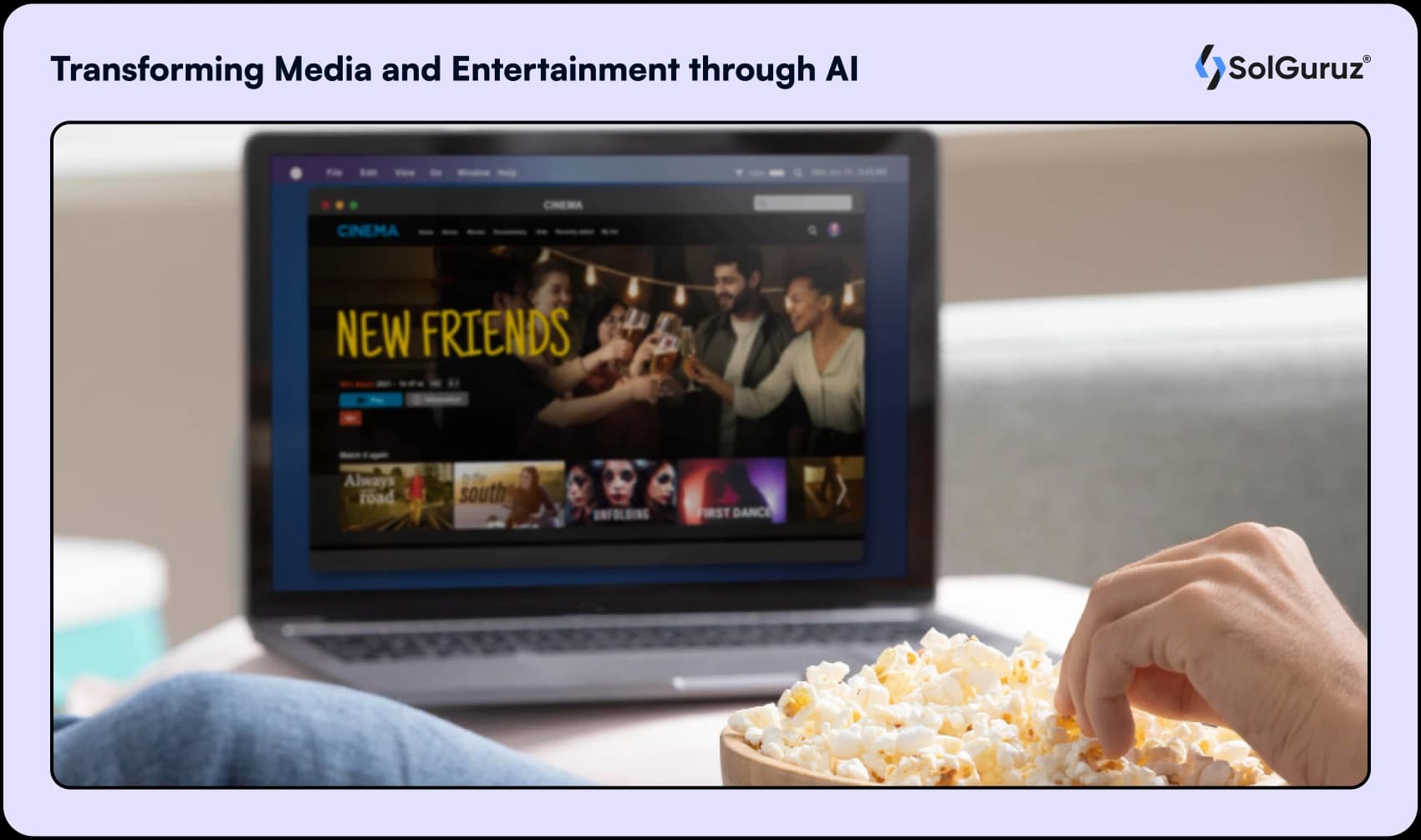
AI creates unique profiles based on user data, such as listening habits and preferences. Personalized recommendations are based on these characteristics and take genre, mood, artist, and tempo into account. AI algorithms are used by platforms such as Spotify to examine user behavior and create customized playlists that improve the experience of discovering new music.
Jalso is another great example of a regional audio streaming platform where AI recommends regional music based on the user’s taste.
A combination of AI techs like machine learning, NLP, and other techs work behind the scenes for user recommendations. Analyzing user watch list data and their choice to next recommend the best match according to their taste. Global platforms like Netflix and Amazon Prime implement AI, and the sections “Because You Watched This” work on a user-choice, user-rating basis.
By improving the production and distribution of content, AI enhances the narrative. By analyzing large datasets, writers can gain valuable insights into character development and plot structures, which in turn helps them create more engaging stories. Sentiment analysis and emotion detection help writers improve their narratives, evoke certain emotional reactions, and build a closer bond with readers.
The production of powerful movie trailers and feature-length film editing both heavily rely on artificial intelligence. AI is excellent at spotting emotionally charged and high-impact situations, which helps editors create exciting trailers. The usage of IBM Watson to create the trailer for the science fiction movie “Morgan” serves as an example. AI is also useful for editing full movies since it can identify main characters and meaningful story points with facial recognition, which speeds up the editing process.
Another great example is “The Frost” movie. The images are generated by the AI tool DALL-E2 with the script generated by a human.
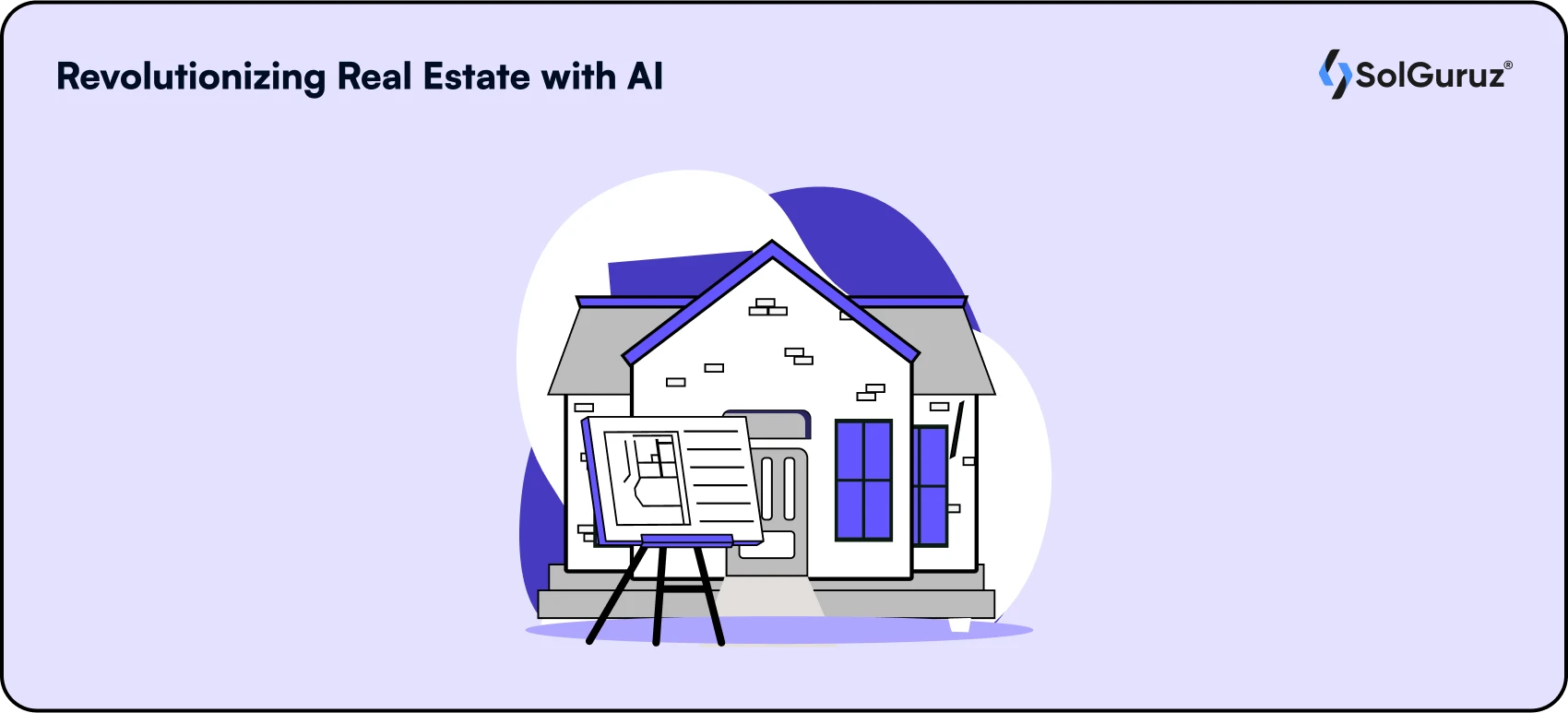
The digital revolution has not left any industry untouched, and real estate is one of them. Earlier, it was a question about how to use AI in real estate. However, with so many technology trends in real estate, ignoring AI in real estate is not possible. The use of cutting-edge technologies in property selling and reselling has changed the property market. Here are a few AI applications in Real estate:
Artificial intelligence (AI) revolutionizes property management operations through work automation, mistake reduction, and increased productivity for property managers of several rental properties. AI frees up property managers to concentrate on strategic matters by simplifying tasks like maintenance scheduling, tenant screening, and lease administration. This results in error-free operations and higher customer satisfaction.
AI systems use past data, regional market conditions, and property characteristics to calculate the value of real estate. Subjective biases are removed by this objective method, which guarantees accurate values for buyers, sellers, lenders, and investors.
Property Dollar is one such real estate application.
For a real estate agent, uninterested buyers are noise that makes their job difficult, look through houses, and then disappear. Since it’s common for users to visit real estate websites just to timepass, it becomes challenging to distinguish between genuine users. Artificial intelligence saves you time by sifting through all of the visitors to find potential clients.
AI optimizes real estate investment portfolio returns by applying machine learning to evaluate large datasets and forecast real estate market volatility, rental revenue, and property valuations. By analyzing economic and market variables, AI-driven risk assessment models build diversified portfolios by optimizing the trade-off between risk and return through real-time data processing and dynamic adjustments.

Traveling with style was a trendy thing, but AI in travel has now become the new fad. AI in travel has created new opportunities for those with wanderlust. Here are a few applications of AI in the travel industry:
Planning a trip, perplexed with the places to visit, how to visit all the places and not leave any gem behind. Here comes AI to your rescue, giving you day-to-day detailed information on where to go, where to eat, and what to see.
AI-powered Chatbots or Virtual Assistants like Ava on Navan help travelers book their corporate trips in advance. Using natural language processing, virtual assistants can provide instant assistance. Conversational AI chatbots answer inquiries effortlessly.
Examples include Expedia’s virtual travel assistant, which helps users search for flights, hotels, and rental cars using voice commands, and KAYAK’s chatbot, which assists with travel planning and booking.
AI-driven customer support improves response time and increases customer engagement. Automating the booking modifications, inquiry handling, and other tasks reduces human input, freeing human resources for even complex tasks like face-to-face customer handling.
Hilton’s AI-powered concierge robot, Connie, assists guests with common questions and requests during their hotel stay, such as restaurant recommendations and local attractions.
AI tool analyzes the past traveling patterns of the traveler to predict travel trends. Identifying the emerging destinations and recommending them according to the choice. It helps anticipate the traveler’s preferences.
Google’s Travel Trends tool aggregates anonymized search data to provide insights into travel demand, popular destinations, and price trends, helping travelers make informed decisions.

The fashion industry always has a different approach than other industries. Being in the creative industry, freedom of expression holds excellent value. Enter AI in this industry, assisting designers with their imagination and humans bringing them to life. Here are a few applications of AI in the Fashion industry –
AI filters and applications nowadays assist online buyers with the liberty to try on clothes before purchasing. This gives them a fair idea about the look and is a deciding factor in the purchase. It also suggests similar-looking cloth options to enhance the user experience and help them decide. Machine learning analyzes user patterns and selection and recommends various options based on user choice. Sections like “You might like this” suggest more recommendations based on user search patterns.
Artificial Intelligence plays a key role in the fashion business by using data from many sources to forecast trends. By examining customer behavior and preferences from social media, past sales data, and fashion blogs, AI algorithms enable well-informed purchasing decisions. By doing this, fashion companies make sure that their collections reflect both established and new trends, which increases their marketability.
AI tools are being included in design and product development processes to provide design recommendations, optimize patterns for material efficiency, and generate virtual prototypes. As a result, the creative process is streamlined, and designers are free to experiment with materials, looks, and hues. Effective design iterations and improved product development in the fashion sector are the end results.
Having a great hotel experience during your staycation can incredibly improve the customer experience. The hospitality industry holds its ground on the principle of giving excellent customer experience, and AI makes it even better. Use cases of AI in hospitality can be –
AI systems can examine user preferences, historical reservations, and browsing patterns to generate tailored suggestions for lodging, places to eat, and things to do. This improves the overall visitor experience.
AI helps manage the revenue of the firm. Intelligent options based on customer booking and recommendations on pricing lists with detailed competitor analysis are some features that can save you bucks while managing the money. To improve pricing strategies, maximize room occupancy rates, and boost revenue for hotels and resorts, AI can examine historical data, market trends, and demand patterns.
Artificial intelligence (AI) algorithms can extract sentiment from customer reviews, social media comments, and feedback to pinpoint areas that need improvement. This enables businesses to improve visitor happiness and quickly handle any issues that may arise. It also helps in enhancing the user experience and making a difference by implementing customer feedback into the services.
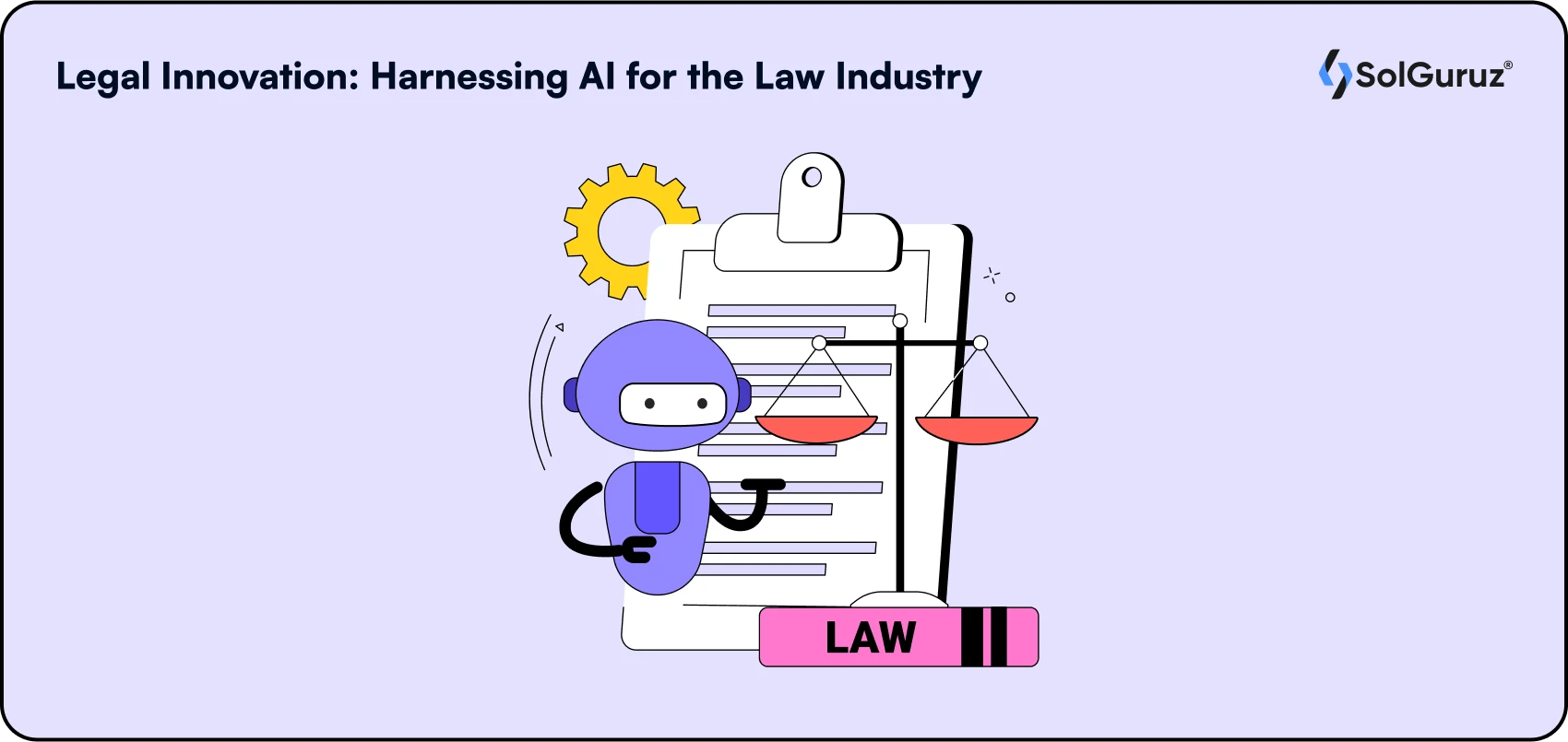
The legal industry takes the traditional approach very well. But with AI adding to the mix of sections, IPCs, and Writs, the legal industry turned into a new thing. Let us look at use cases of AI in law –
Key clauses, possible risks, and compliance requirements are all examined during the contract analysis and approval process. Legal experts must typically invest a great deal of time and energy in this process, which entails a manual review of lengthy and intricate documents.
Reports state that a company’s legal department usually dedicates about half of its time to contract review. However, important information extraction from contracts is automated by AI-powered systems using machine learning (ML). Even natural language processing (NLP) techniques also assist in automating the tasks.
Electronic discovery is an investigation of e-mails, business communication, and other data to find evidence against crimes. AI algorithms like Brainspace help in reading countless documents and finding the keywords. The conceptual clustering process helps in gathering the information with speed and accuracy.
AI not only helps identify the IPRs but also streamlines the process and management. Tasks relating to IP portfolio management, trademark monitoring, and patent searches can be streamlined with the use of AI in legal technology. These algorithms examine large datasets and offer insightful information about current patents, possible infringements, and IP tactics.
AI quickly scans vast databases of academic articles and patents to identify prior art and determine the novelty of an innovation. It saves a lot of time for human resources to focus on other legalities of the patent. In addition, it monitors several websites, social media profiles, and e-commerce sites for any instances of trademark infringement or unauthorized use of protected marks.
The process of creating legal papers has been completely transformed by AI technology, which has made it faster, more effective, and less error-prone. Smart systems generate bespoke contracts, agreements, and legal forms based on established variables and templates that meet particular needs. In terms of creating regular NDAs, this kind of platform can produce the contract using a pre-established template. Names of the parties, essential terms, and other required data are inserted.

Automating tasks and operations and increasing efficiency are all benefits of AI’s presence in the manufacturing industry. The different use cases of AI in manufacturing are –
Collaborative robots or Cobots are designed to work in collaboration with humans. They are economical and do not require their own space. They work alongside humans, like picking and packing. They are able to pick parts, perform production tasks like sanding, polishing, and screwing, and run traditional manufacturing equipment like stamping and injection molding presses. They can also use cameras with computer vision capabilities to perform quality control inspections.
The healthcare giant Sanofi deploys cobots for their product packaging.
AI-driven predictive maintenance systems analyze sensor data from machinery and equipment to identify any potential problems and identify problems before they arise. Manufacturers can save downtime, prolong the life of vital assets, and schedule maintenance proactively by spotting wear and tear early on.
Conglomerate Siemens implements predictive maintenance systems in their manufacturing plants to detect system failures in advance. By analyzing the data from sensors from different machinery, the AI-powered tool can detect potential breakdowns and schedule maintenance activities.
AI algorithms analyze vast amounts of manufacturing data for inefficiencies and optimize overall operational efficiency. Optimizing these factors drastically reduces the cost and increases the throughput.
General Electric (GE) deploys AI for process optimization to identify the bottlenecks and increase the throughput.
Agriculture revolutions introduced tech to agriculture, and the world saw different varieties and breeds of grains. With the presence of AI in agriculture, new and innovative techniques have come to light.
Traditionally, farmers use crop sowing, irrigation, and pesticides on the farm. In the traditional approach, the distribution is uniform, which causes much resource wastage. AI in the field can analyze the farm, soil, and texture and recommend the usage of water or pesticides within the same field.
John Deere’s precision agriculture technology helps farmers collect data about their farms. Based on the data from sensors, satellites, and farms, farmers can make informed decisions about planting, irrigating, and spraying pesticides according to the farm’s needs.
The most difficult issue for farmers is dealing with the weeds. All the nutrition, irrigation, and resources given to the crops are sucked by the weeds affecting the crop production. Identifying and removing the weeds becomes a typical and impractical job when the fields are spread over acres of land.
Blue River’s See & Spray System uses computer vision and AI technology to detect weeds from the fields. A camera attached to the tractor can easily identify crops or weeds when the tractor is moving.
Wearables for humans have been very successful. But wearables for livestock are equally beneficial for managing and monitoring them. The devices can monitor vitals, signs of stress, or the time of birthing.
Companies like CattleEYE and Cainthus deploy AI wearables on livestock to monitor their diet, and the data helps them increase milk production.
Soil is the basic component in farming and soil health becomes the most important factor when considering farming. Various governments focus on campaigns for the improvement of soil health. With AI this has become a bit easier.
Trace Genomics offers soil health analysis and services. The data helps in understanding the type of soil, suitability of soil with crops, nutrient levels, water capacity, and other factors. This data helps assess soil quality.
Farmers can take pictures of diseased plants and crops and can upload them to an app “ Plantix”. This AI-based plant app helps farmers in identifying crop diseases and their suitable treatments.
AI is altering the insurance industry one claim at a time.
The insurance industry already relies on the bed of data and risk assessment. With AI jumping into the mix, computing data is easier.
Because of the digitalization of current touch points and the availability of new data assets through digital partners, re/insurers have access to an increasing amount of data during the underwriting process. Just take a look at telematics, remote sensors, satellite photos, or digital wellness records. The ability to convert this data into useful insights for underwriting, which allows re/insurers to provide their clients with better-customized coverage and price, is a key point of differentiation in the competitive landscape.
Lemonade is an insurance company utilizing machine learning to underwrite claims with effective risk assessment.
AI skills can lead to increased efficiency and insights, as well as new opportunities for risk coverage and solution development for previously uninsurable issues.
Zurich Insurance Group processes claims via artificial intelligence (AI) and natural language processing (NLP) technology. AI algorithms extract pertinent information, evaluate the validity of claims, and speed up the claims settlement process by evaluating unstructured data from emails, claims papers, and other sources.
AI helps in analyzing vast amounts of data like past claims, history of premiums, timely payment of premiums, medical records, and databases. The analysis helps in assessing a candidate and potential frauds or red flags.
Coalition is a cyber insurance company that uses AI to detect fraudulent activities.
Snapsheet is another firm implementing AI to automate claims processes and also in detecting fraud.
Public Relations has always been and will be about human interaction and access. The relations humans maintain through different platforms by putting up thoughts, views, or any form of communication. AI in PR can give useful deep insights about post engagement, streamlining workflow, and organizing the posts. Not only this but the most important thing in PR is engagement, AI brings to the table customer engagement.
Monitoring and analyzing different media handles and responses can give meaningful insights into what the target audience likes or dislikes. AI mining the data for response collection also helps in sentiment analysis.
MeltWater, BrandWatch are some big names utilizing AI to analyze the data, text, images, or logo to decode the best outputs for your brand.
Identifying the face who can relate to the target audience is the crux of PR. AI tools like Onclusive is a PR analytics platform used to identify the influencer who can most relate to the target audience.
The digital channel of companies to mark their presence online. AI marketing benchmark report says 44% of marketers use AI, emphasizing the importance of AI in digital marketing.
The use of AI in content creation helps with content generation. It saves costs and enhances efficiency. AI tools not only save time and cost but also generate results that help firms deliver quickly. Tools like ChatGPT and Jasper help generate content. Midjourney is another excellent tool for generating images.
SEO and content optimization are one of the pillars of digital marketing that rely on data analysis. AI tools like Surfer SEO, Jasper AI, and others help in keyword analysis, search intent, and competitor performance.
A presale or sales team will assess each potential lead’s value using a process called lead scoring. Every company uses a unique set of measures to determine the level of interest a potential customer has in their goods or services. Now add AI to this mix—AI analyzes the lead data and reads the patterns and behaviors, enhancing traditional prospecting techniques by identifying high-intent leads more accurately and efficiently.
Imagine an automated tool that sends potential business leads emails and gathers information while you can focus on operations. That is the magic of AI in email marketing. Mailchimp the well-known email marketing giant implements AI to build customer relations and drive traffic toward the company resources.
With AI in the advertising landscape, the shift is dramatic. Whether it is offering personalized ad recommendations or ad optimization. AI is automating tasks and improving results.
Programmatic advertising uses precise targeting to segment audiences. How the ads are bought and sold is programmatic, keeping the audience in mind.
Google Ads is the finest example of programmatic ads. It uses ML algos in real-time to bid for advertisements by analyzing user behaviors and patterns. By analyzing user behavior, demographics, and browsing history, Google Ads can deliver ads to the most relevant audience segments and adjust bidding strategies to maximize return on investment (ROI).
Advertisers can maximize the impact of their ads by optimizing their messaging and ad design with Persado, an AI-powered marketing platform. By analyzing language patterns, emotional triggers, and performance data, Persado generates personalized ad copy that resonates with target audiences. The AI-powered tool works on improving ad engagement, click-through rates, and conversion rates.
Adobe Advertising Cloud can predict the effectiveness of different ad placements, formats, and targeting options. It can analyze historical data, market trends, and audience insights to enable advertisers to allocate budgets more effectively, optimize ad spend. Additionally it helps in achieving their campaign objectives more efficiently.
IBM Watson uses AI to analyze vast amounts of marketing content and predict which elements will resonate best with specific audiences. This allows for the creation of more compelling ad copy and visuals that are tailored to different interests.
Software development is the work of humans, but AI assists developers by helping them focus better on the problem at hand and providing them with context-aware suggestions and snippets.

Coding involves writing loads of code and implementing it, checking for bugs, rectifying, reviewing, and rewriting. The whole cyclical process involves many iterative tasks that can be automated with the help of AI. AI can generate code for iterative tasks, and then it can be used in the code multiple times without bothering the developers to recheck.
AI tools like GitHub’s CoPilot help developers complete code, automate the process, and reduce processing time. Based on your coding style and the context of the project, it evaluates your code and makes recommendations for relevant code segments, functions, or entire lines. As a result, while AI takes care of the tedious parts, developers may concentrate on the larger-picture reasoning.
With the help of AI technologies, developers may complete tasks more quickly and accurately by cutting down on the amount of time needed to test and debug code by up to 70%. AI tools not only help identify bugs but also repair them quickly, saving developers a lot of time.
DeepCode is an ML algorithm-based tool that reviews code and detects bugs. It can process millions of code lines within minutes, referring to multiple code repositories.
AI tools can perform on large scales, making it scalable. These tools improve performance over time by learning patterns over time. With every new input, test coverage may be constantly increased by utilizing self-learning algorithms. Development teams may see right into the inner workings of the product using this white-box technique, as opposed to standard dynamic testing methods that make the application under test appear opaque to both hackers and traditional testing methods. By expanding code coverage, development teams can get an advantage over attackers through the use of the source code.
AI tools like Selenium, Applitools, Katalon, and others increase automation and layout inconsistencies and defects.
When we heard the automated response on the phone call, we were least aware that this would be the future of call centers one day. Jumping to the present today, IVRs and smart call routing have turned the tables and brought forward technology in the form of AI. AI in call centers has many applications like –
AI was long introduced to our lives via interactive voice responses. It is just that with the much hype about AI, the tech is classified into AI technology that makes automated calling more organized and systemic. It reduces the need for additional human resources for redundant tasks. AI-powered IVR implements NLP tech to understand and respond to human voices on call.
Having the ability to analyze calls is a major source of power for AI-powered QA and call-monitoring solutions.
AI-powered quality assurance solutions cannot only listen to your calls but also your queries when you’re delving into them.
Conversational AI makes these kinds of technologies possible and allows for natural language-based communication. For example, a manager might ask the AI to recognize certain patterns or behaviors in their team’s phone conversations in simple terms.
Automation makes it possible to quickly sift through data, giving contact centers valuable insights like hold and call times as well as a plethora of client data, including intent and buying personality and sentiment analysis. AI can do more with machine learning, enabling marketing and customer support teams to benefit from predictive analytics.
When intelligent routing is used in a call center, hold times are significantly decreased since consumers are quickly directed to their destination, which may include numerous call centers and branches if necessary. It routes calls based on their intent by utilizing information about the caller’s online activities, including the websites they visited. Additionally, relevant information about callers and their intentions is immediately provided to agents. This contributes to increased agent productivity and enhanced client satisfaction in general.

E-commerce is facilitating business online. AI in E-commerce makes it even easier to filter, get personalized suggestions,
When you type in your query, “Need an orange dress for the wedding,” the suggestions displayed are orange dresses. That is AI working on the back with all your preferences giving you targeted results. Now if you were to search the whole repository, you’d be lost, and imagine the time you would have used up. Here, with the use of AI and one command within 15 minutes, you are sorted by the wedding outfit you have to wear.
Thanks to AI-powered attribute enrichment, customers are exposed to a wider choice of products and can find what they’re looking for more quickly. The ideal AI system uses behavioral data, along with text and image data from your catalog, to dynamically update categories and attributes in real-time at the user level.
You searched for a smartphone on Amazon yesterday, and two days later, you are getting a notification about the lowest price ever on the smartphone. “You also searched for” is an AI suggestion to look at your previous search history and remind you if you need anything. AI analyzes your search patterns and behaviors to recommend products.
Similarly, Netflix suggests “Since you watched this” suggestions based on your previous watch history, the AI suggests that you might also like the show with similar types of content.
Product pricing is affected by demand-supply. However, other factors, such as market scenarios, holidays, previous listings, and many others, also affect pricing. It is not possible to look into all the price history, search for, and calculate the prices.
Walmart uses AI-powered algorithms to determine dynamic pricing using the market scenario, past pricing data, and customer purchase patterns.

The fitness goals are always personal and are about achieving your personal best. AI is helping us achieve those goals by giving us personalized health updates, nutrition plans, and exercise schedules. It has become easier to monitor your health parameters with AI.
AI can analyze your fitness goals and performances and adjust them to your fitness levels. It suggests a personalized workout plan that works according to your body type and specific body needs. It takes into account various parameters like body weight, body mass, height, and BMI.
The Nike Run Club app utilizes AI to create personalized training plans. The app analyzes your running data and suggests running routes, paces, and recovery periods based on your fitness level and goals.
AI can be your real-time virtual trainer. It implements human pose estimation technology to analyze the human skeletal system and correct your posture. This helps in avoiding unforeseen injuries and real-time coaching without the need for a trainer.
Tempo Studio is a home fitness system that makes use of 3D body scanning technology driven by AI. Another example is KinesteX is another AI trainer that helps in form training. The technology monitors your form while you work out and gives you immediate feedback to make sure you’re doing the exercises correctly and without any injury.
By analyzing your dietary goals, restrictions, and intake needs, AI can help you cook up a nutrition plan that fits your body type and needs. The personalized meal plans monitor your calorie intake, which can be combined with other fitness apps to get detailed fitness data.
Noom is a weight loss app that incorporates AI-powered coaching. The app analyzes your eating habits and preferences and then provides personalized meal plans.
Meals.ai is another app that plans your diet according to your needs and choices. It can give options for customized meal planning with preparation times.
Another very prevalent tech is the use of wearables. Smart Watches have changed the fitness landscape entirely. Now it is not just about “What’s the time?” It is about how much you slept, your calorie intake, your steps completed, and other bodily vitals.
Fitbits are the best examples to think of when you talk about wearables. They can assess your sleep patterns, such as how much you slept- light, REM, or other sleep patterns. It tells you about your heart health.

Transportation is the backbone of infrastructure in any country. Advanced technology in transport and logistics is changing the scenario. AI in logistics and transportation has different applications –
Based on regional demand trends, a chain of retail stores must restock inventory at each site. To predict demand at specific stores, artificial intelligence (AI) systems examine sales data, historical inventory levels, and external influences (such as regional events or promotions). This minimizes stockouts and lowers the cost of carrying extra inventory by enabling effective inventory replenishment plans.
Another AI technology that is heavily invested in to improve supply chain management for organizations is warehouse robots.
Amazon employs 200,000 robots in its warehouses. These robots assist humans in picking, sorting, transporting, and stowing items in 26 of Amazon’s 175 fulfillment centers.
Customers who are dissatisfied with a product may churn. Companies can use computer vision technology in their warehouse operations to keep quality control and identify damage. Logistics managers can determine the type and extent of damage and take the necessary action to stop further damage.
Social media was the flag bearer of AI advocacy. Whether it’s the different AI filters in Snapchat, the different effects in Instagram reels, or Facebook Ads, everything is AI-powered.
Social media is meant to connect people virtually.People use social media to express their emotions and connect with like-minded people.
While installing any social media application, now you are prompted to choose some categories of your liking and when you open the installed app you get a feed. This feed is AI-powered so the more you see pages, the more categories you follow, the more it learns, and the better it gets.
You must have noticed while using Instagram that you get a personalized feed. Every time you follow a page you start getting the updates on your feed. The same goes with Snapchat, Facebook, LinkedIn, and other social media platforms.
The use of AI-powered chatbots to answer and resolve queries like account settings, manage accounts, and other basic tasks helps relieve the human workforce to focus on more complex issues.
The analysis and pattern recognition behavior of AI is well used in predicting future trends. We see how in a little time, some videos go viral. That is the AI working to detect patterns that are most trending, and then you can make videos and reels using those trends and in no time the whole world knows you.
Enter the world of love with a bit of help from AI. If you are not good at writing, your AI friend is there to write a love letter for you. A study by McAfee found that 1 out of 3 men used AI to write a love letter. Here are other use cases of AI-powered dating apps –
Tinder uses AI for matching profile recommendations. Now, while swiping right or left on Tinder, be sure about your decision, as the profile suggested to you is deeply analyzed by AI. The AI analyzes your preferences, choices, habits, and other data to suggest the correct options. You never know if the next perfect dream girl you are talking to might turn out to be your AI girlfriend.
Bumble app makers say they use AI-powered chatbots or AI companion chats to suggest catchy lines or icebreakers as conversation initiators. It helps those individuals who are shy and are not so comfortable in social communication. The tool is proving helpful for many individuals finding it difficult to start conversations.
Social media and dating apps are used to collect real-time user data that is greatly linked with personal life status, personal details, and other data that can cause privacy issues.
The use of decent language is another great concern for dating apps. So many dating apps like Tinder and others deploy AI to detect the use of foul language as safety measures.
Sports are physical activities, and associating tech with physical activity can produce wonderful results. The advancements in sports we see these days are bringing forth the champions of tomorrow. With the help of AI, the leaps can be measured, and the football goal can be quantified. Let us see the contribution of AI in the Sports industry –
IBM power index and match analytics used in the US Open and Wimbledon. The AI tool can analyze player throw output, data analytics, how the ball will land and the player moves, and even the probability of winning based on real-time data, except the match outcome. The use of Random Forest algorithm to predict the winner of the game. These predictions are in their infancy, and the weather conditions, player’s injury history, and other such factors have yet to be taken into account.
In cricket, while the players are playing the AI tools analyze all the numbers and statistics like winning probability, player positions, and many other factors. These factors help greatly in decision-making.
“He gets on Base.”
Remember the famous and funny scene from the movie Moneyball? If yes, you know what we are talking about. When spotting a talent, you go through the length and breadth of his playing performance and assess based on what you see. AI makes this process by screening multiple talent profiles and matching them with the required player profile in no time. And you have more time to train and coach those players.
AI is influencing the way cricket matches are refereed. One of the most challenging calls in cricket, for instance, is leg before wicket (LBW), where the umpire has the authority to declare a batsman “out” if he determines that the ball would have struck the wicket had it not already contacted any part of his body, other than the hand holding the bat, first.
Since LBW depends on inference, it is a call that is famously challenging to make. Thankfully, AI is now a component of umpires’ decision-making process when it comes to LBW dismissals. Artificial intelligence will increase match fairness by determining which team performs better than the other, rather than relying solely on call errors.
Computer vision tech is used to monitor moves, and AI is used to analyze and predict the next move from a player. AI systems use predictive modeling to forecast results. These models can predict player injuries by using biometrics, external factors, and historical data. This helps with the creation of injury prevention strategies. They aid in strategy planning by simulating game scenarios as well.
Quoting Gartner, “According to 76% of HR directors, companies would fall behind in organizational success if they do not adopt and apply AI technologies, such as generative AI, within the next 12 to 24 months.”
Keep an eye on your staff to improve productivity assessments. AI has great potential for labor planning as well. Massive volumes of staff data may be crunched by analytics tools with AI capabilities to identify patterns, forecast attrition, and point out possible skill gaps. To ensure that their workforce is prepared to meet future business needs, HR managers can create focused training programs and sound succession plans.
Quinix, for instance, has developed an AI-driven forecasting and automation system that enables businesses to examine thousands of data points, predict demand peaks and troughs, and automatically allocate the precise number of workers they require.
The hiring process is a game of guesswork: starting at a certain job, which candidate will contribute most to the organization? The enhanced data processing capabilities of machine learning and recruiting chatbots support human resources personnel in several hiring tasks, including identifying suitable applicants, conducting bot-assisted interviews with them to determine a good fit, and assessing the findings of their evaluation to determine whether to extend an offer. AI tools like Levity assist HR in the onboarding process automation.
Offboarding is not an exception. Welcoming an employee and letting them go both requires preparation from HR. An AI-powered solution can, for instance, send out emails to terminate an employee’s access to various systems, documentation about the return of corporate assets, and departure surveys when an employee departs the company.
Ciphix,a robotic process automation(RPA) implementation makes offboarding tasks like disconnecting the VPN and wiping the outgoing employee’s accounts entirely automated.
The voice of employee analysis is HR analytics services. Analyze your workforce data to help you make wiser HR choices. Acquire practical knowledge and influential recommendations for increased worker satisfaction.
Determine which workers are most likely to leave and increase their level of job satisfaction to keep them on board. Determine the underlying causes of their desire to explore new possibilities. Reduce the loss of human capital in your company by retaining them on staff.

The field of AI analytics is a recent development that combines analytics with artificial intelligence and machine learning to produce insights, automate workflows, make predictions, and motivate actions that improve business results. AI analytics provide businesses with a more complete picture of their operations, clients, rivals, and the market by merging AI with business intelligence.
AI can handle massive amounts of data and analyze them at once, saving a lot of time compared to traditional data analysis.
AI tools like Tableau, Polymer, and other tools automate the data analysis process and give you stunning results in the form of visuals and graphs, simplifying the process. And making the data more engaging altogether.
By utilizing predictive AI, users can create predictions and evaluate many scenarios to choose the one with the highest likelihood of success.
Users can obtain a more thorough understanding of their data and make it easier to comprehend and manage by consolidating all of their data into a single solution.
The market for generative AI was estimated to be worth USD 29 billion in 2022, and throughout the forecast period (2023–2030), it is expected to increase at a 47.5% CAGR. This forecast includes the tools and services from all the big names like Google(Alphabet Co.), Microsoft, Adobe, Synthesis, Nvidia, Accenture, Rephrase.ai, and many other companies.
Infosys is yet another example in the list of companies that have already embraced the power of AI and their AI-powered tools and technology, which they are consistently contributing to innovation.
To give you a peek into the future, let us see some other stats –
By 2025, 30% of outbound marketing messages from large organizations will be synthetically generated, up from less than 2% in 2022.
By 2030, a major blockbuster film will be released with 90% of the film generated by AI (from text to video), from 0% of such in 2022.
These stats are directly quoted from Gartner. These numbers effectively state the future of generative AI in the entertainment and business intelligence industries. However, the wave of AI is all-encompassing and will not leave any industry untouched. In this blog, we discuss the impact of AI on the majority of industries.
AI, with its various arms like generative AI, machine learning, Prompt Engineering, predictive analysis, and many others, is going to tap into the human potential and is going to increase automation, productivity, and efficiency.
The variety and complexity of AI applications show how big data, machine learning, and other applications have significant effects on a wide range of industries. Even while some of these uses are still in their infancy, as this technology advances, they are probably just the beginning. As a result, businesses ought to think about moving swiftly to increase internal resources for AI research and application.
AI can be used as a generative AI model in the form of prompt engineering or branches of AI like machine learning, deep search models, predictive analytics, and other AI models.
AI can be used in real estate for property valuation, in climate change mitigation for cloud seeding, and in healthcare to assist online nurses. Various industries have various applications.
AI is used by many sectors like automation, fashion, retail, and e-commerce and the use of AI is not limited to these. But sectors like healthcare, insurance, entertainment, marketing and others use AI to enhance automation.
AI is used in different ways in business. Either in the form of AI-powered chatbots, or as an automation tool or for data analysis, or for predictive analysis to know and understand customer behavior, patterns and other data.
Written by
Lokesh is a Co-Founder and Chief Technology Officer at SolGuruz, a senior technical consultant with over 10 years of experience in exploring the horizon of the software development industry. He has worked closely with startups and enterprises, mentoring them in engineering their tech solutions. With a hands-on experience of 10+ years as a developer, he has delivered solutions using a wide range of technologies such as iOS, Android, Angular, Node, RTC, React, MongoDB, PostgreSQL, Python, and many more. At SolGuruz, we believe in delivering a combination of technology and management. Our commitment to quality engineering is unwavering, and we never want to waste your time or ours. So when you work with us, you can rest assured that we will deliver on our promises, no matter what.
Unlock the potential of AI across different sectors. Discover how SolGuruz can integrate AI into your business solutions.

1 Week Risk-Free Trial

Strict NDA

Flexible Engagement Models
Give us a call now!

+1 (646) 703 7626
Discover the latest tech trends from SolGuruz - empowering businesses with innovative solutions and transformative insights!